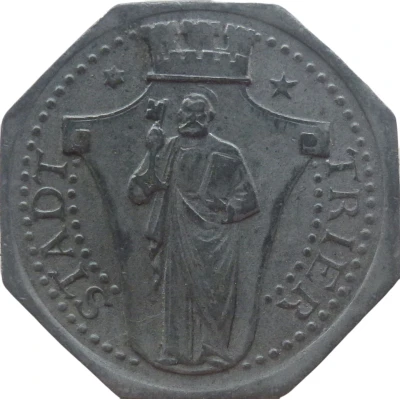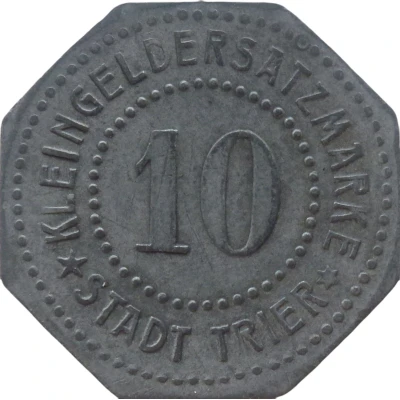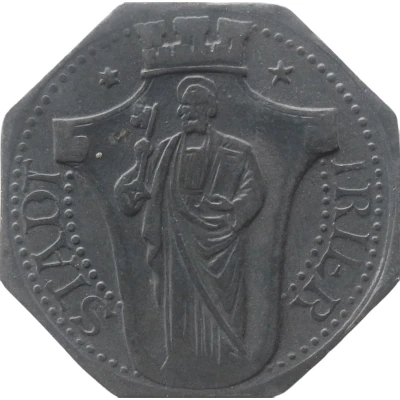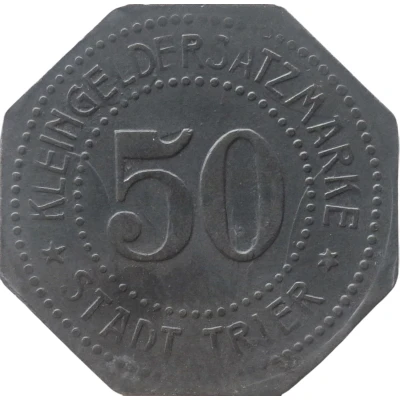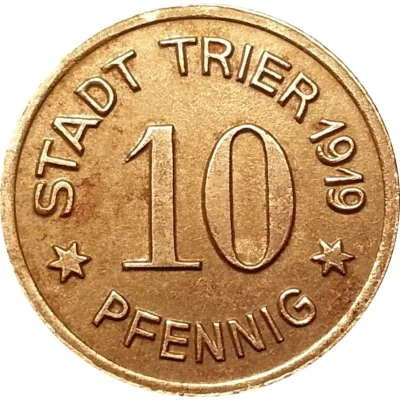
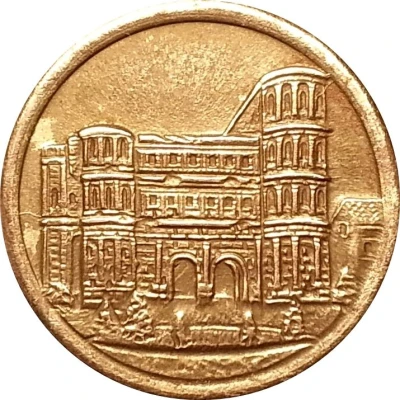

© Nomek
10 Pfennigs - Trier
1919 year| Iron | 3.5 g | 20.1 mm |
| Issuer | City of Trier (Prussian province of Rhine) |
|---|---|
| Period | Weimar Republic (1918-1933) |
| Type | Standard circulation coin |
| Year | 1919 |
| Value | 10 Pfennigs (10 Pfennige) (0.10) |
| Currency | Mark (1914-1924) |
| Composition | Iron |
| Weight | 3.5 g |
| Diameter | 20.1 mm |
| Thickness | 1.7 mm |
| Shape | Round |
| Technique | Milled |
| Orientation | Medal alignment ↑↑ |
| Demonetized | Yes |
| Updated | 2024-10-04 |
| Numista | N#16189 |
|---|---|
| Rarity index | 24% |
Reverse
Image of the Porta Nigra, large Roman city gate.
Edge
Plain
Comment
There is a large date with large lettering and a small date with small lettering.2 variants, the tower on the right does or does not touch the rim
Also, in the variant where the tower does not touch the rim the building on the right has an extra window.
Funck#549.6p
Obv. - "1" in denomination squat, 7.3 mm height.
Rev. - building to the right has 8 windows.
Picture: © Images courtesy of Alexandr Prokofyev.
Interesting fact
One interesting fact about the 10 Pfennigs - Trier 1919 coin is that it was issued during a time of economic turmoil in Germany, known as the "Inflationary Period" (1914-1923), when the value of the German mark plummeted, and the prices of goods and services skyrocketed. To combat this issue, the government introduced a new currency, the "Rentenmark," which was pegged to gold and restricted the amount of money in circulation. The 10 Pfennigs - Trier 1919 coin was part of this effort, as it was made of iron, a cheaper metal than the traditional copper or silver, and had a low denomination, making it more accessible to the general population.
Price
| Date | Mintage | VG | F | VF | XF | AU | UNC |
|---|---|---|---|---|---|---|---|
| 1919 | 800000 | - | - | - | - | - | - |
Values in the table are based on evaluations by sales realized on Internet platforms. They serve as an indication only for 10 Pfennigs - Trier 1919 coin.
